Moulin Rouge! The Musical a stage for inclusivity and possibility
How Moulin Rouge! The Musical forged new paths for its performers - real and fictional – and became a modern-day canvas for equity, freedom and love.
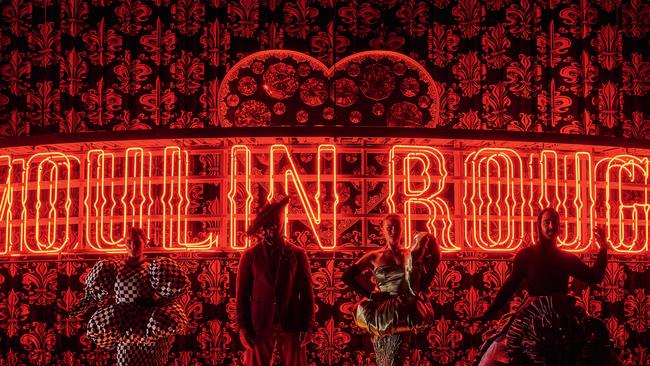
Alinta Chidzey is a source of shapeshifting power. As Satine in the Tony Award-winning Moulin Rouge! The Musical, she descends from the ceiling in a wave of glittery splendour. She retreats to a boudoir adorned with velvet and neon to tend to her private grief.
Today, she’s morphed into a beguiling performer, at the scene of a special Vogue Australia shoot. She’s wearing Schiaparelli. The uniform of beguiling performers everywhere: all black, head-to-toe. She tilts her hat, gloved hand on her waist. Her co-star Des Flanagan, grins broadly, watching from the wings. He cheers with encouragement when the Lady Ms take the stage. The new Beyoncé comes on. Ruva Ngwenya – or La Chocolat – shimmies in a Valentino gown. Peals of delighted laughter.
When Vogue meets the Australian cast of Moulin Rouge! The Musical one cloudy spring morning at Sydney’s historic Capitol Theatre, they’ve had nearly 300 chances to perform together. That’s 300 different ways of transforming Baz Luhrmann’s cult 2001 film in which a plucky courtesan (Satine) and star-crossed poet (Christian) find – and lose – each other in Belle Époque Paris into a musical worthy of 2022.
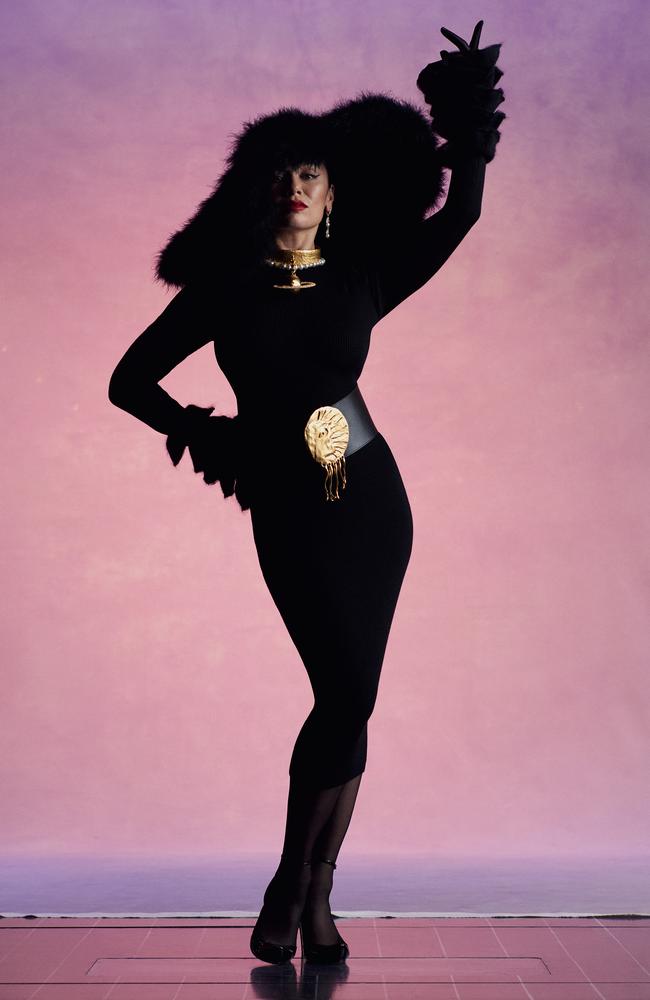
It’s a moment in which the movie’s famous mantra – truth, beauty, freedom, love – feels less like a guiding philosophy of struggling artists and writers, and more like a salve for our pandemic era, one in which division has replaced connection and anxiety overrides the quest for sensual pleasure.
Moulin Rouge! was a postmodern roller-coaster that riffed on everything from Puccini’s La Bohème to Bollywood to the Orpheus myth. It articulated itself in the language of popular music, giving the soundtrack to its viewers’ lives an operatic grandeur.
Moulin Rouge! The Musical, directed by Alex Timbers, heightens the original’s freewheeling energy. There’s a giant, bejewelled elephant, yes, raunchy costumes by Catherine Zuber, and dizzying choreography from Sonya Tayeh. More than 70 songs by everyone from The Rolling Stones to Britney Spears to Eurythmics. But this production possesses a deeper emotional intensity.
In an old story about a group of bohemians grappling to save a Paris theatre at the turn of the 20th century, it’s forged new paths for its performers – and re-imagined the inclusive values of its world.
Chidzey, who grew up in Melbourne’s Brunswick with a Singaporean mother, has long been drawn to complex female characters. She’s played Velma Kelly in Chicago and Anita in West Side Story. When we meet in the Capitol’s ornate lobby, she’s swapped her Schiaparelli dress for a white bathrobe. Her cheeks are flushed and dark hair spills across her shoulders. Nicole Kidman’s portrayal of Satine is etched in her memory.
“Satine is such an iconic character,” she enthuses. “The part of the film that I remember so vividly is The Pitch Song. There are farcical moments and I love playing comedy. There is a lot about her that people discover throughout the show.”
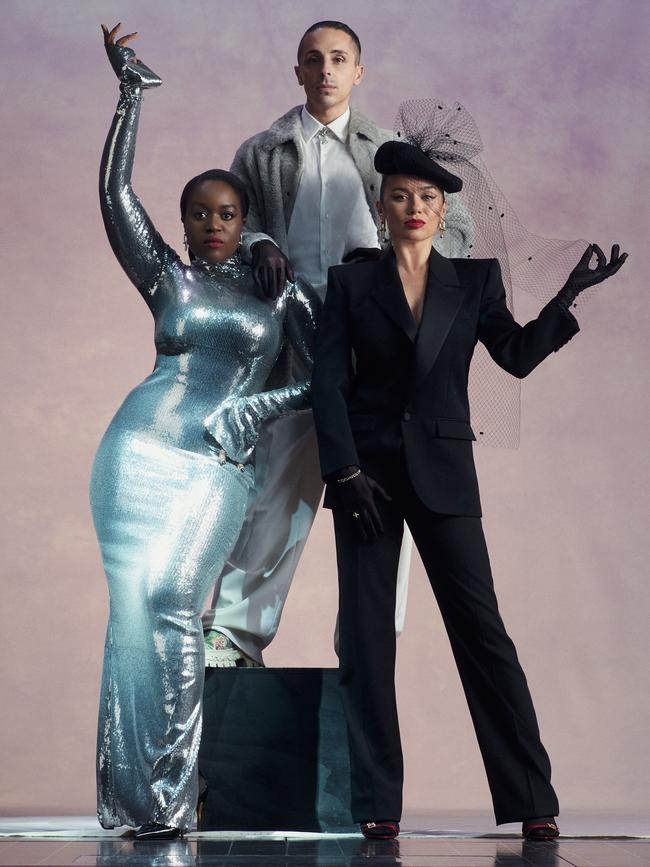
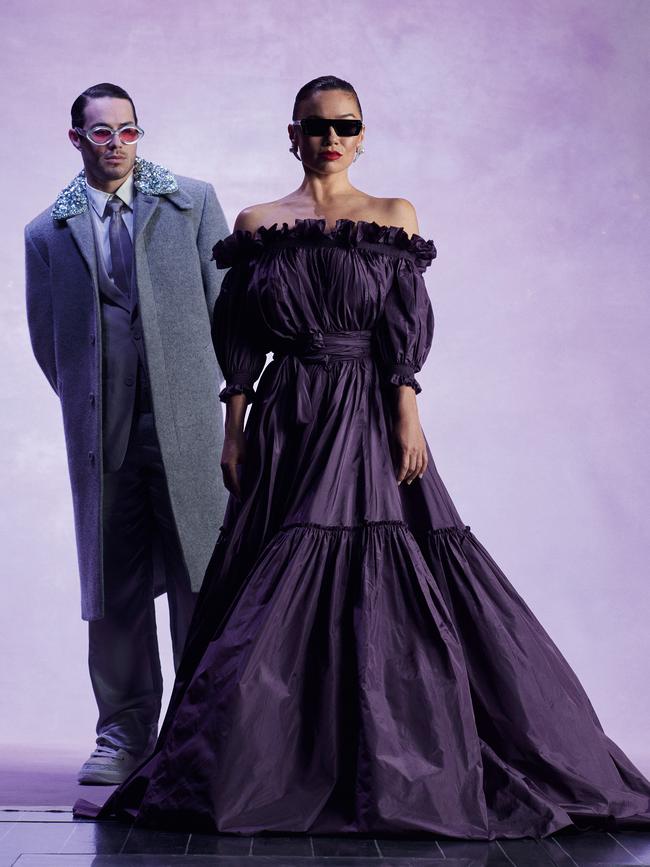
The Belle Époque, which unfolded between the end of the Franco Prussian War and the start of World War I, marked a period of cultural change. In Montmartre, the bohemian home of the Moulin Rouge, an exhilarating dance called the cancan allowed women from the working classes to make an income. In France, a string of women’s magazines – Femina, La Vie Heureuse – showed mothers and wives that they could have a life beyond the home while caring for their families.
Kidman’s Satine was ethereal. Whether she was wearing a red satin gown, as designed by Catherine Martin, in the Elephant Love Medley or suspended from a trapeze in a jewelled corselet, she conjured a certain fantasy of womanhood: glamorous, mysterious, unattainable. But Chidzey’s Satine blurs the line between artist and muse. She is more aware that femininity, itself, is a kind of performance.
“A lot of the time, Satine has these personas,” she smiles. “She has so many facades to her that you don’t know until she is by herself and isolated with her feelings.” She pauses. “[Women] are made to think that we have to put on our armour in everyday life for survival.”
Moulin Rouge! The Musical gives Satine a traumatic backstory. Her success at the club is hard-won; the result of grit and tenacity. Chidzey auditioned for the Australian production when she was 37 weeks pregnant. “I understand the responsibility she feels for keeping the club together,” she says. “Feeling like you have to be a pillar of strength while feeling like you are going to break.”
Chidzey, who gave birth as rehearsals began, felt empowered by the production to return to the stage. The show’s producer, Carmen Pavlovic, who equipped the rehearsal rooms with private breastfeeding space, promised she’d never presume what Chidzey couldn’t do as a new mother. In return, Chidzey, whose husband is caring for their daughter, swore she would openly voice her struggles.
On the day I saw the show, chills reverberate through the audience when Chidzey performs a soaring rendition of Katy Perry’s hit song Firework.

“The stakes are high and I’m in a position of having to build my inner strength,” smiles Chidzey, who fed her daughter in rehearsal breaks. “I never thought a Katy Perry song would move me so much.”
Moulin Rouge! The Musical is a story about choices. Do we choose love or material comfort? Take a risk or play it safe? The show voices this via the rivalry between Christian, in this version, a singer-songwriter from Ohio, and The Duke of Monroth, played by Andrew Cook, a rich and entitled patron vying for Satine’s attention.
For the camera, they stalk each other wearing form-fitting Gucci suits. Inside a nest of filigree hearts, they lock eyes and hook their fingers. Later, I catch them sharing the highs and lows of their week, laughing together over lunch. Flanagan, who is affable and unguarded, tells me watching Ewan McGregor in Moulin Rouge! as a teenager in Beechworth, country Victoria, gave him permission to emotionally express himself.
“To walk in his shoes is such an honour,” he says. So was meeting Luhrmann in the flesh: “It was such a special moment to hear his source material, what he felt Christian was in his simplest form.”
Christian is Flanagan’s first lead role in a mainstage production and he sings with a crystalline sincerity. “I admire most his belief in love – for Satine, the bohemians and the craft, which I really correlate with. The first 40 minutes of the show is just a party. A message of the show is to grasp the opportunities in front of you and relish them. Don’t waste time.”
Cook’s Duke evokes a coiled, leonine energy. The seasoned actor, singer and musician, who was also part of Strictly Ballroom the Musical, has always been compelled by flawed characters.
“I love playing the bad guys,” he says with a laugh. “I’m always drawn to the psychology of that. In the film, The Duke is played by Richard Roxburgh, who I adore. But you don’t want Satine to be with him. This version of The Duke has the money and the power but he’s very charming, he’s dressed to the nines, he thinks he knows what women like.”
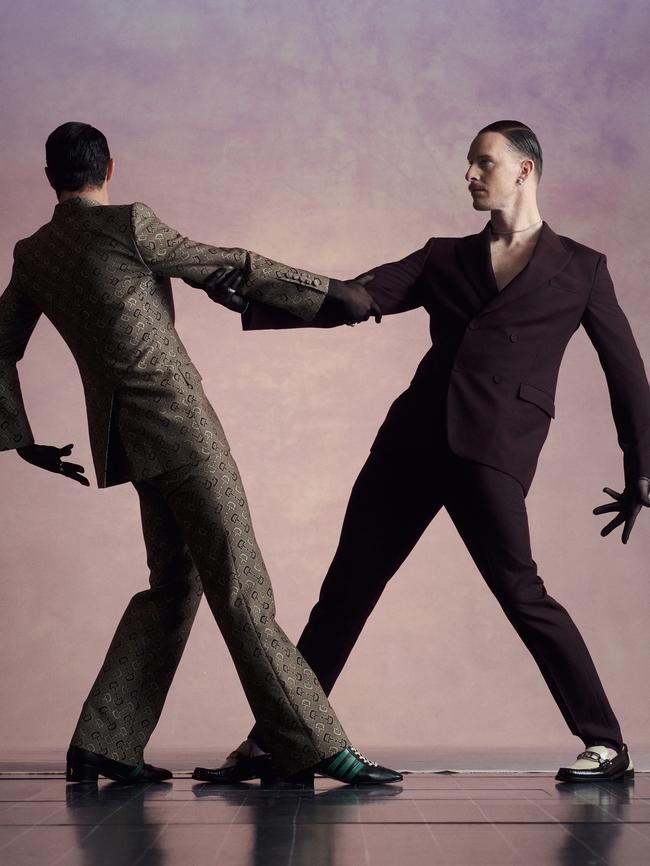
But Moulin Rouge! The Musical, he says, is a chance to explore the depths of toxic masculinity, how it can infiltrate the world we live in. “When I play villains, I often find their pain and work from there,” he tells me. “[I ask] what would make The Duke feel so vulnerable, that he could never be enough in his father’s eyes? When Satine decides it’s not going to work, he goes to rage and power. That’s a comment on male fragility, rich, powerful white men who run countries.”
On stage, he says, he’s emboldened by his co-stars to take his character to dark places. “There’s a scene between The Duke, Satine and Christian that’s his most toxic moment but because of Des and Alinta, there’s truth and fire between us,” he muses. “You feel safe to deal with the subject matter because we hold each other.”
The Belle Époque, French for ‘Beautiful Age’, was culturally permissive. There were still inequities, of course. But in Montmartre, Edgar Degas and Henri de Toulouse-Lautrec started painting light, documenting the lower classes. Colette was writing candidly about sex. Gender roles were in flux. The Parisian underworld, epitomised by clubs such as the Moulin Rouge, were a refuge for many kinds of bodies.
On set, this milieu reveals itself in miniature. The esteemed Australian actor, Simon Burke AO, in a velvet Versace blazer, a less debauched version of his character, Moulin Rouge owner Harold Zidler. Beside him, the Nigerian-Australian singer-songwriter Tim Omaji – better known as Timomatic – as artist Toulouse-Lautrec, recalls a fallen aristocrat in three shades of purple.
Christopher Scalzo plays Babydoll, a drag queen at the club. And, best of all, Ryan Gonzalez is resplendent in a ruffled crinoline.
Gonzalez, acclaimed for their performances in Jersey Boys and In The Heights, plays Santiago, an Argentine tango dancer. In Backstage Romance, the electrifying routine that opens act two, and the sultry El Tango De Roxanne, they strut and spin and slide towards their lover Nini, played by Samantha Dodemaide.
“The tango requires so much precision, so much lust, so much passion,” they say with a laugh. “I have a very dance-heavy background and when the opportunity to play Santiago came up, all these things in my childhood kind of lined up. To be able to express myself with my body with Samantha is such a gift.”
“When I think about inclusion, I think about truth, beauty, freedom and love – and [how] it can be threaded into the fabric of the show”
Gonzalez, along with ensemble member Scout Hook, is nonbinary and their identity, they say, has helped forge a deeper connection with their character. “It has required me to work out what I bring as a performer,” they say. “Santiago is an intense human and I have the freedom to explore that. I’ve realised, the deeper and richer your character, the truer you are to yourself. Our female-presenting ensemble dance with so much masculinity,” they say.
“And we have a drag artist in the show who needs so much femininity – during that time, performers had to ‘pass’ to survive, to sell their bodies.”
We can read Moulin Rouge! The Musical as a story about the roles we perform in art and life. For Gonzalez, it also reveals all the ways in which gender is a construct. He says that Moulin Rouge! The Musical has made every effort to support non-binary cast and crew members.
“Our creative team has been really careful to use our pronouns,” they say. “I think theatre picks up the landscape it is part of and reflects it back to the people who make up that community. It feels that in five years, this will be the prerequisite – and people who are cast in musicals aren’t cast for their gender anymore.”
Inclusivity is the DNA of Moulin Rouge! The Musical. In Australia, 50 per cent of the cast are culturally or gender diverse. For Chloe Beck, the show’s director of equity, diversity and inclusion, one of the first to be appointed to a Broadway production, making change means giving the cast the chance to re-imagine what is possible.
In 2021, Karen Olivo, with the full support of the Broadway show, quit her Tony-winning turn as Satine to protest the power dynamics central to the industry. Beck says the significance of this moment coupled with the stillness afforded by the pandemic-forced global shutdown saw production company Global Creatures introduce a cultural statement with honesty and transparency at its heart.
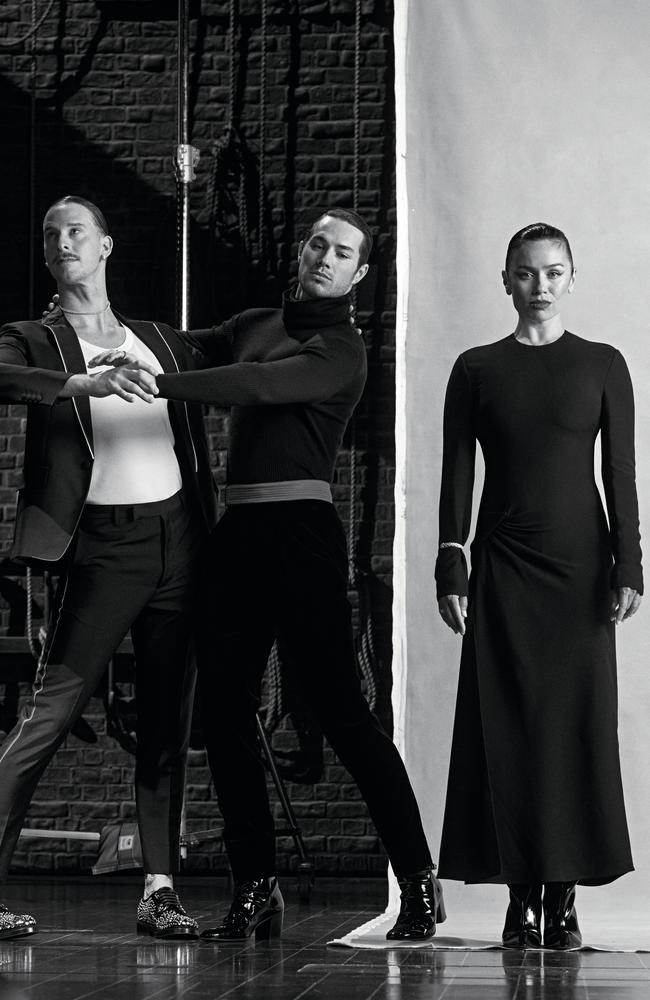
“We were ready to have these conversations 20 years ago but didn’t have a safe space [that meant] your career wasn’t compromised,” she says. “We want to create a world where you’re not afraid to say I go by they-them. We want to create a culture of self-care. The show doesn’t have to go on anymore.
“Our entire team has learned how to listen to each other,” she continues. “The show is about this band of misfits who come together. When I think about inclusion, I think about truth, beauty, freedom and love – and [how] it can be threaded into the fabric of the show.”
Burke, a stately presence who is renowned for roles in The Sound of Music to Phantom of the Opera, tells me that portraying Zidler demanded every skill he’s honed in the course of his five-decade career.
“I like playing with the extremes of the character,” he says.
He believes the show, which was plagued by Covid cancellations, makes a statement about how precarious – and powerful – art-making is.
“When we were performing in Melbourne after [lockdown for] 18 months we would get rounds of applause because of the visceral feeling people get every night,” he says. “Last year, it was like, ‘Will I ever work again?’’’
Omaji, who migrated from Nigeria to Canberra as a baby, plays the consummate starving artist Toulouse-Lautrec. Moulin Rouge! The Musical gave him the freedom to infuse Toulouse with his African heritage. It’s proof that inclusivity isn’t just about who you see on stage. It can be about changing how you see them.
“In stature, he was very small but in spirit, he was a fighter,” says Omaji, who speaks with a rich musicality. “He stood for people who were outsiders, so to bring my Africanism to the role only felt right.”
He pauses. “Toulouse doesn’t sound like any French person. I gave him a unique voice. And it is such a joy.”
Moulin Rouge! The Musical is at Sydney’s Capitol Theatre now and will tour nationally in 2023.
This article appears in the December issue of Vogue Australia, on sale now.

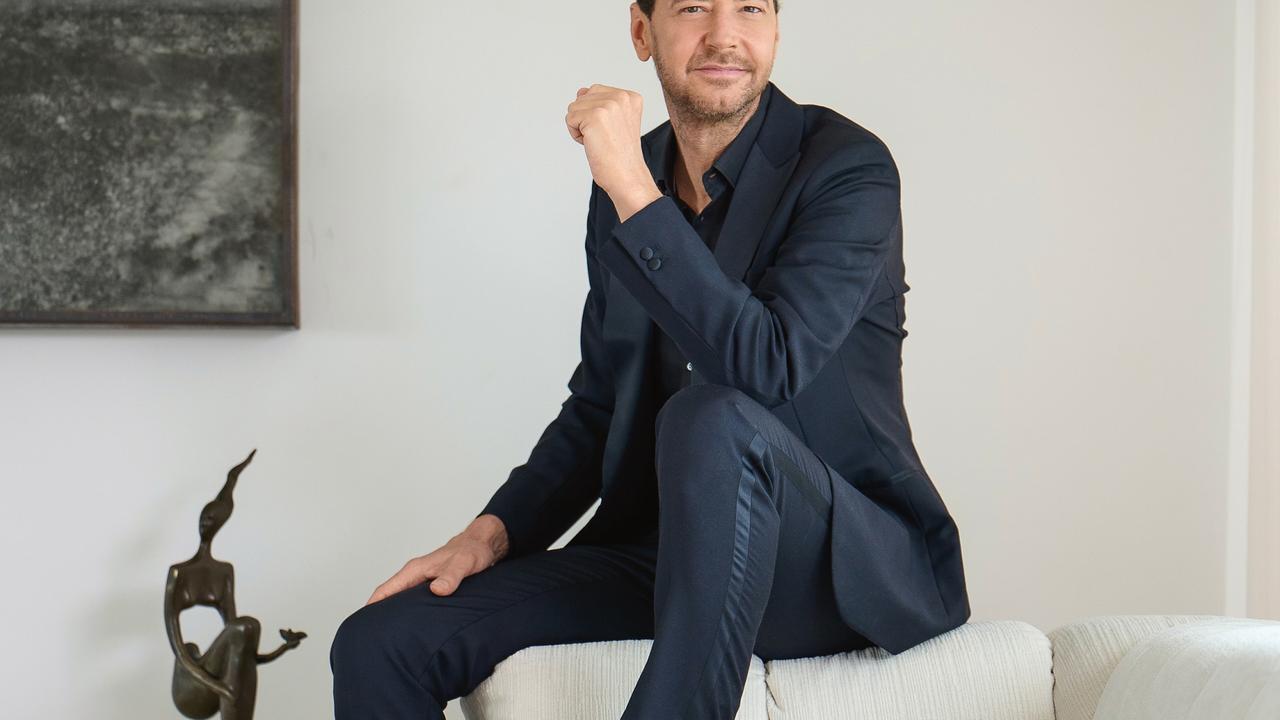
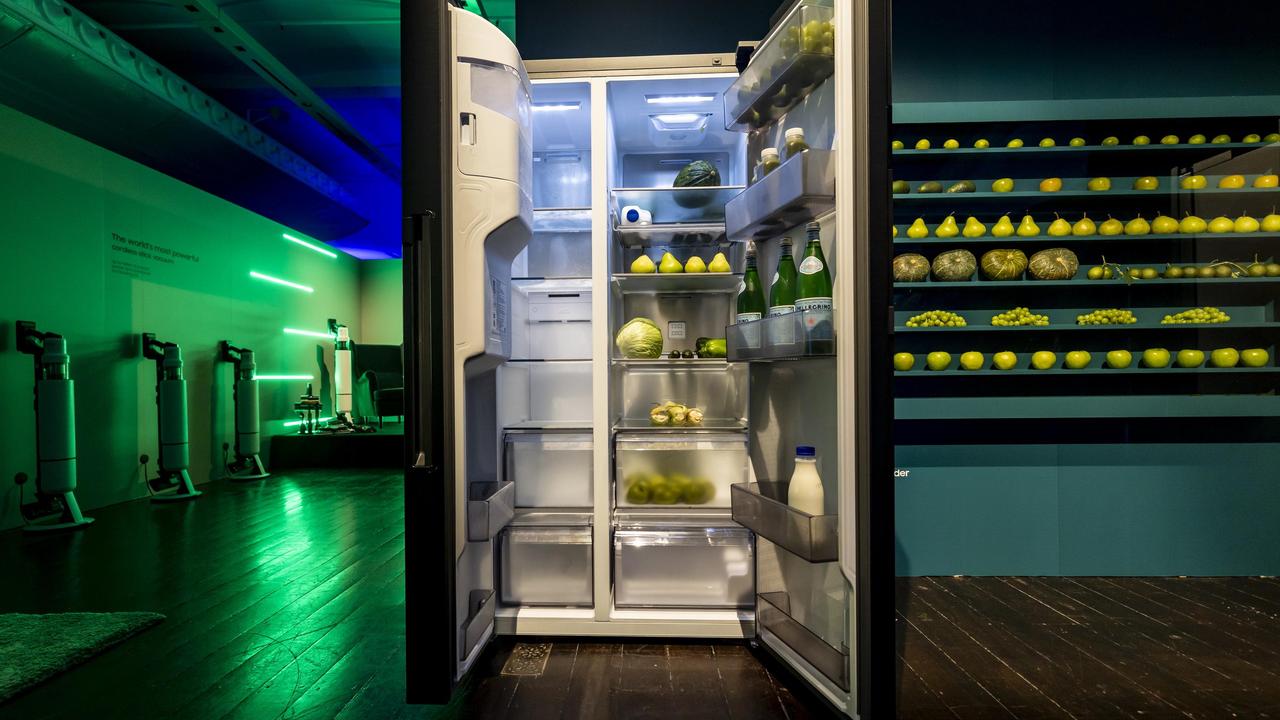
To join the conversation, please log in. Don't have an account? Register
Join the conversation, you are commenting as Logout